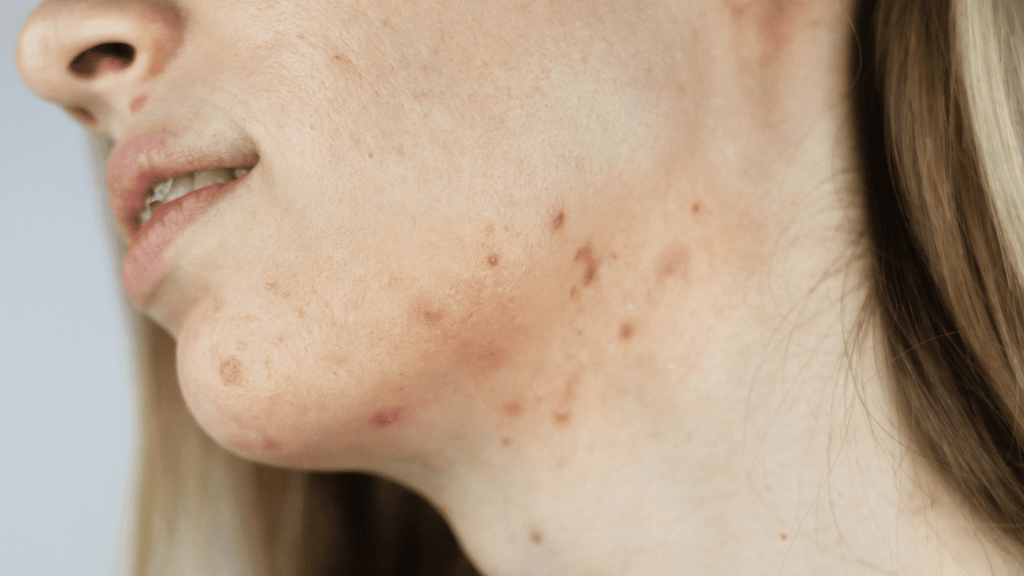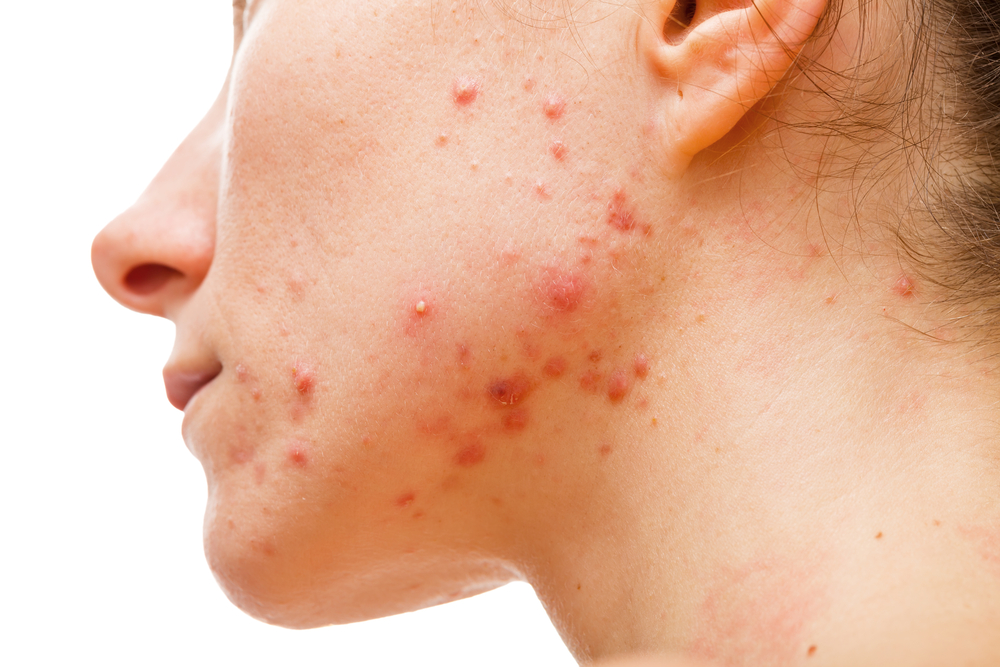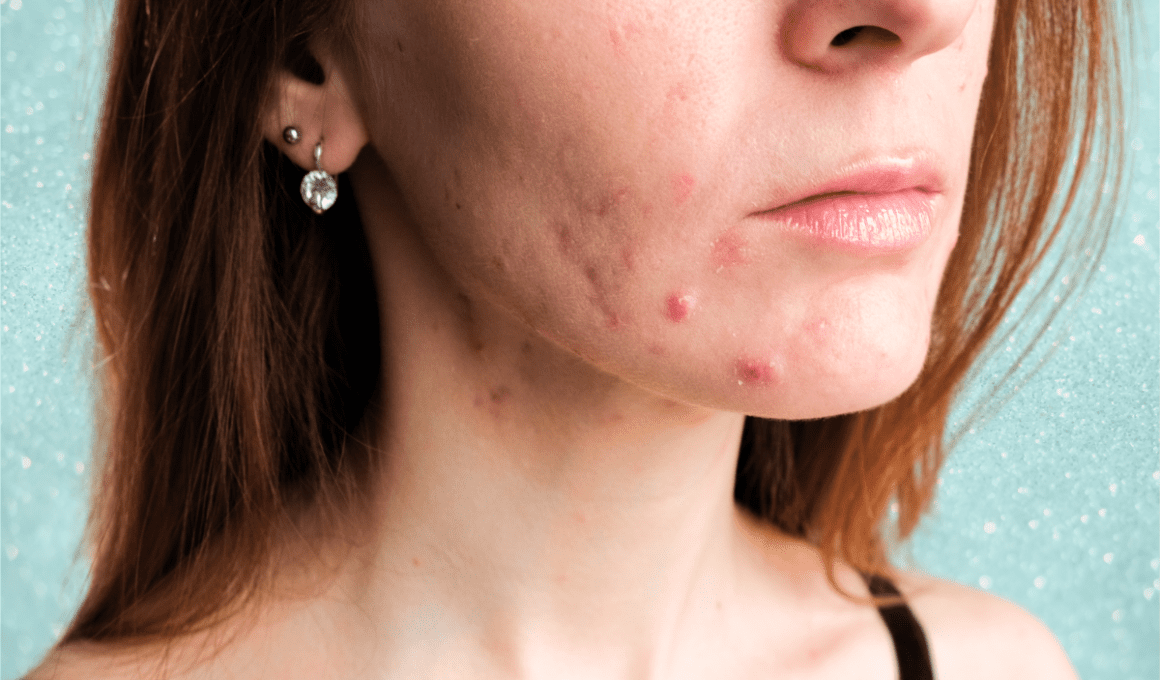Acne is a common skin condition that occurs when hair follicles or pores become clogged. While acne can appear anywhere on the face or body, one of the most frustrating areas for many individuals is the jawline. Jawline acne can be particularly challenging, as it can be caused by a variety of factors, and treatment may require patience and consistency. In this article, we will explore the causes and risk factors for jawline acne, as well as treatment options and when to consult a doctor for more serious cases.
What Causes Jawline Acne?
Jawline acne occurs when the hair follicles or pores along the jawline become clogged with oils, dead skin cells, and other debris. The skin naturally produces oils from the sebaceous glands to lubricate itself. These oils are channeled to the surface of the skin through hair follicles. However, when excess dirt, hair, or dead skin cells accumulate, they can block these pores, leading to the development of acne.
Additionally, the bacteria that naturally live on the surface of the skin may thrive in the clogged pores, causing inflammation. This inflammation leads to the formation of pimples, blackheads, or cysts, resulting in jawline acne. Several factors can contribute to the development of acne in this specific area, including genetics, hormonal changes, lifestyle choices, and medications.

Factors That Contribute to Jawline Acne
1. Hormonal Changes
One of the primary causes of jawline acne is hormonal changes, particularly in teenagers and young adults. During puberty, the body experiences fluctuations in hormones, which can lead to an increase in oil production by the sebaceous glands. This excess oil can clog pores and cause acne to form. Hormonal changes during menstruation, pregnancy, or while using birth control can also lead to jawline acne. This is why many individuals notice breakouts along the jawline during certain times of the month.
2. Genetics
Genetics play a significant role in the development of acne. If your parents or close family members have experienced acne, you may be more likely to develop it as well. Genetic factors can determine the size and activity of your sebaceous glands, which can influence how much oil is produced on your skin. If your body produces an excessive amount of oil, it may lead to clogged pores and acne.

3. Poor Skin Care Habits
Inadequate skin care can also contribute to the development of acne on the jawline. Not cleansing your skin regularly, using harsh or irritating products, or failing to remove makeup before bed can all lead to clogged pores and breakouts. It’s important to follow a proper skincare routine that includes gentle cleansing and exfoliation to remove dead skin cells and prevent pore blockages.
4. Stress
Stress can trigger hormonal changes in the body that can lead to an increase in oil production, which, in turn, can contribute to acne breakouts. When you’re stressed, your body produces higher levels of cortisol, a hormone that can stimulate the sebaceous glands. This excess oil can clog pores and lead to acne. Managing stress through relaxation techniques, exercise, or other activities can help reduce the impact of stress on your skin.

5. Dietary Factors
Certain dietary habits may contribute to the development of acne, especially on the jawline. Some studies have suggested that high-glycemic foods, such as sugary snacks and processed carbohydrates, may trigger acne outbreaks. Dairy products have also been linked to acne in some individuals. A diet rich in fruits, vegetables, whole grains, and lean proteins can help support healthy skin and reduce the risk of acne.
6. Medications
Some medications, including corticosteroids, birth control pills, and certain other drugs, can trigger acne outbreaks. If you are taking medication and notice an increase in acne along your jawline, it is important to discuss it with your healthcare provider. They may be able to adjust your prescription or recommend alternative treatments.

Treatment Options for Jawline Acne
Fortunately, there are various treatment options available for jawline acne, ranging from over-the-counter medications to prescription treatments. The type of treatment you choose will depend on the severity of your acne and how your skin responds to different treatments.
1. Over-the-Counter Treatments
For mild to moderate jawline acne, over-the-counter (OTC) treatments may be sufficient. These products often contain ingredients such as benzoyl peroxide, salicylic acid, or sulfur, which work to reduce inflammation, kill bacteria, and prevent clogged pores. Some popular OTC acne treatments include creams, gels, and cleansers.
2. Prescription Medications
For more severe cases of jawline acne, a doctor may prescribe stronger treatments. These may include oral antibiotics, which can help reduce bacteria on the skin, or topical retinoids, which help to promote skin cell turnover and prevent clogged pores. In some cases, your doctor may recommend hormonal treatments, such as birth control pills, if hormonal imbalances are contributing to the acne.

3. Lifestyle Changes
In addition to topical and oral treatments, making certain lifestyle changes can help reduce the occurrence of jawline acne. Practicing good skincare habits, such as cleansing your skin twice daily and using non-comedogenic makeup, can help keep your skin clear. Managing stress through relaxation techniques like yoga or meditation can also be beneficial. Additionally, maintaining a healthy diet and avoiding known acne triggers can help support clear skin.
4. Professional Treatments
For persistent or cystic jawline acne, professional treatments may be necessary. Dermatologists may offer options such as chemical peels, which exfoliate the skin and promote healing, or laser therapy, which can target deep acne lesions and reduce inflammation. These treatments can be effective in cases where other options have not provided sufficient results.
When to See a Doctor
While many cases of jawline acne can be treated with over-the-counter products and lifestyle changes, it’s important to consult a doctor if your acne becomes severe, persistent, or painful. A healthcare provider can help determine the underlying cause of your acne and recommend appropriate treatments. If over-the-counter products are not effective, or if your acne is affecting your self-esteem, a doctor can provide personalized guidance and prescription treatments.
Conclusion
Jawline acne is a common concern for many individuals, and its causes can vary from hormonal fluctuations to genetics and lifestyle factors. Fortunately, there are a variety of treatments available, ranging from OTC products to prescription medications and professional therapies. With the right approach, you can manage jawline acne and maintain healthy, clear skin. If over-the-counter treatments are not effective, or if your acne is severe, it’s always a good idea to consult a healthcare provider for further advice. By understanding the causes of jawline acne and implementing effective treatment strategies, you can achieve smoother, clearer skin in no time.
